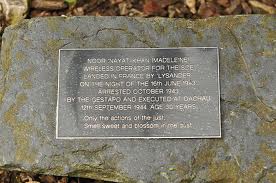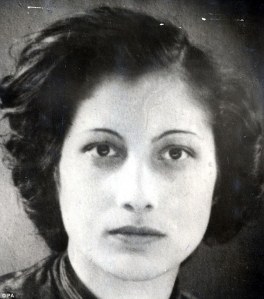
Noor Inayat Khan January 4 1914 – September 14 1944
A month ago, in a section of Bloomsbury known as Gordon Square, a modest memorial to an almost forgotten hero was unveiled by Princess Anne. The memorial was dedicated to a young woman who went by the name of Nora Baker, who was without a doubt the most unlikely spy of WWII. Her given name was Noor Inayat Khan.
At the time I began writing this post a couple of months ago, Noor Inayat Khan had already become a fixture of my imagination, but had not captured it, so to speak. Though I had completed the ‘factual’ part of the post, I feared I would not be able to put it up, because it was clear to me that mere facts could not reveal the person they were about.
Despite all that is now known about her, this woman remained, and remains shimmeringly elusive, and all the facts used by those who admire, and indeed revere, her fail to get at the heart of who she really was. I myself had to let my post lie fallow until the thread I needed to unravel her personality gently glided into my hand.
Many of us are strangely fascinated by stories about spies. Reading about their dangerous adventures compensates us in some vicarious measure for our dull and uneventful lives. We imagine spies to be masters of intrigue and deception, seducers and seductresses of exceptional talent, who take dangerous risks, complete their missions and live to tell the tale. Spies belong to a species of people with flexible identities, elastic morals and what has been referred to by some as situational ethics, who covertly serve their governments, and do not hesitate to kill in the service of their countries.
With one qualified exception Khan was none of these things. The exception was that England was not her country. But it was the country of her adoption, and one she unswervingly served, and for which she sacrificed her life. A more idealistic person would be hard to imagine; she had been brought up in the mystical Sufi tradition and had internalised all the lofty principles of this great surviving branch of an ancient spiritual practice predating both Islam (with which it is associated) and Christianity.
To call someone a saint is to encumber her with a whole constellation of associations which are usually tainted with religious beliefs. Yet, when a seemingly ordinary human being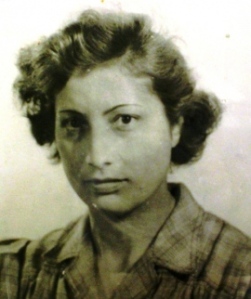 manages to live a life of extraordinary goodness and unselfishness, despite extraordinary hardship and without in the least compromising that goodness, what other description can be found to serve? Khan’s whole character, from her childhood on, shimmers with a deeply human and completely unpretentious sanctity. She seems to have discharged all her self-chosen duties in a spirit of intense love and sacrifice.
manages to live a life of extraordinary goodness and unselfishness, despite extraordinary hardship and without in the least compromising that goodness, what other description can be found to serve? Khan’s whole character, from her childhood on, shimmers with a deeply human and completely unpretentious sanctity. She seems to have discharged all her self-chosen duties in a spirit of intense love and sacrifice.
In 1940 the British Government conceived of a plan of espionage, reconnaissance and sabotage to be conducted by ‘civilian personnel’ in Axis occupied countries. The scheme was enthusiastically approved by the cabinet (though not the military), and in time a group of volunteers was assembled and trained, and sent forth, in Churchill’s grandiloquent phrase, to “set Europe ablaze.” The secret organisation formed to carry out this mission was the Special Operations Executive, or the SOE, and this was the organisation which recruited Noor Inayat Khan.
The SOE was active from July 22nd 1940 to January of 1946 and numbered around 13000 agents. By April of 1942, when Churchill tacitly agreed to admit women into the SOE, over 3,200 agents, or nearly a quarter of the total number, were women. In a statement given by Captain Selwyn Jepson, an SOE senior recruiting officer, when interviewed by the Imperial War Museum for its sound archive, he stated:“I was responsible for recruiting women for the work, in the face of a good deal of opposition, I may say, from the powers that be. In my view, women were very much better than men for the work. Women, as you must know, have a far greater capacity for cool and lonely courage than men. Men usually want a mate with them. Men don’t work alone, their lives tend to be always in company with other men. There was opposition from most quarters until it went up to Churchill, whom I had met before the war. He growled at me, 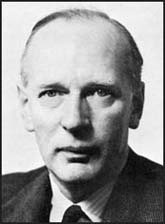 “What are you doing?” I told him and he said, “I see you are using women to do this,” and I said, “Yes, don’t you think it is a very sensible thing to do?” and he said, “Yes, good luck to you'” That was my authority!”
“What are you doing?” I told him and he said, “I see you are using women to do this,” and I said, “Yes, don’t you think it is a very sensible thing to do?” and he said, “Yes, good luck to you'” That was my authority!”
In an excerpt from the book They Fought Alone, by Maurice Buckmaster the chief of the SOE and published in 1959, Buckmaster states “Often I would go down together with others from headquarters and would cross-question recruits, taking on the roles of Gestapo men, in order to try and break their cover-stories. By this means the story itself would become ingrained in their minds and they themselves would gain some small idea of the rigours of interrogation. If they survived without cracking, their confidence would be greatly increased and they could face the thought of genuine German interrogation in the knowledge that they had already withstood a similar grilling successfully. These rehearsals were grim affairs and we spared the recruits nothing. They were stripped and made to stand for hours in the light of bright lamps and though, of course, we never used any physical violence on them, they certainly knew what it was to go through it by the time we had finished. If they cracked badly under the strain, it was tolerably sure that we would not send them, for it was clear that a man who caved in when questioned by H.Q. staff, in however realistic conditions, would be only too likely to wilt in the face of the Boches. A minor slip would not be held against a man, but too general a collapse most certainly would; we derived no pleasure, I need hardly say, from those occasions when our cruel jibes, our reiterated and shouted questions and our implacable persistence broke a man’s spirit, but we could console ourselves with the fact that his cracking at a rehearsal might well have saved his life – and others – by preventing the possibility of his doing the same thing with the enemy. We were not playing a game.”
One of the SOE’s most notable recruits, Khan was born in Moscow, Russia, on the second of January 1914. She lived first in France and later in England. Although English was her mother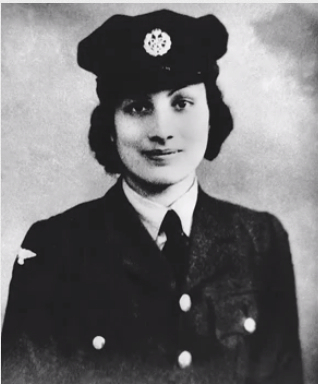 tongue, she spoke fluent French, and this was the main reason she came to the attention of and was recruited by the SOE while she was a member of the Women’s Auxiliary Air Force. She had joined the WAAF under the name of Nora Baker, shortly after arriving in Britain after escaping the German invasion of France on May 10th of 1940. Khan and her family reached Falmouth on June 27th 1940. Her mother, Ora Ray Baker, was an American, a cousin of Mary Baker Eddy, founder of the Christian Science movement. Her father Inayat Khan, was an Indian belonging to the Sufi sect of Islam, a sect long persecuted by mainstream Muslims. She was an accomplished musician, who, prior to the German invasion, was studying music in the Paris conservatory under Nadia Boulanger, and child psychology in the Sorbonne. When she volunteered with the WAAF she had just published a book of Buddhist stories (Jataka Katha) for children, a book which is still in print.
tongue, she spoke fluent French, and this was the main reason she came to the attention of and was recruited by the SOE while she was a member of the Women’s Auxiliary Air Force. She had joined the WAAF under the name of Nora Baker, shortly after arriving in Britain after escaping the German invasion of France on May 10th of 1940. Khan and her family reached Falmouth on June 27th 1940. Her mother, Ora Ray Baker, was an American, a cousin of Mary Baker Eddy, founder of the Christian Science movement. Her father Inayat Khan, was an Indian belonging to the Sufi sect of Islam, a sect long persecuted by mainstream Muslims. She was an accomplished musician, who, prior to the German invasion, was studying music in the Paris conservatory under Nadia Boulanger, and child psychology in the Sorbonne. When she volunteered with the WAAF she had just published a book of Buddhist stories (Jataka Katha) for children, a book which is still in print.
Khan’s life was interwoven with all manner of complexities, religious, national, ethnic, philosophical, and ethical. She was a British subject who believed in independence for India, a confirmed pacifist engaged in covert operations in WWII, and a woman in a largely male-dominated network. The SOE officers entrusted with Khan’s training were probably quite uncomprehending of Khan’s’s pacifist philosophy. Leo Marks recollects that the sound of a gunshot once sent her into a trance from which she took hours to emerge. The S.O.E swept aside the ethical reservations voiced by other military agencies, notably the Royal Air Force, about dropping civilian agents behind enemy lines and requiring them to carry out military operations, sabotage and the arming of underground movements. They therefore provided their agents with weapons. But Khan refused to carry a gun, because she was resolved to never take a life.The Imperial War Museum has the weapon issued to Khan, which she left behind, in accordance with her pacifist principles. The S.O.E also issued cyanide capsules to its agents, but Khan chose not to take hers with her on her mission.
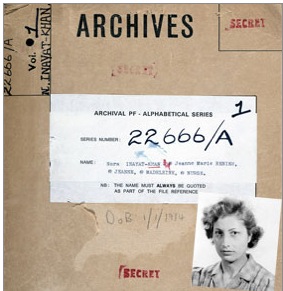
British National Archives file
The first three months of Khan’s training with the SOE, included wireless operations and resistance of interrogation. She had already trained as a nurse with the Red Cross when she volunteered with WAAF on November 19th 1940. At the time of her recruitment by the SOE she had been an Assistant Section Officer in the WAAF with a salary of £300.00 per year, and it was at this time that she received her initial training as a wireless operator. Khan was one of 39 women out of a total of about 400 agents who would be dropped behind enemy lines in occupied France by the S.O.E. Khan was given the cover name Jeanne Marie Regnier and the code name Madeleine. During her training with the S.O.E. Khan was derided for her aversion to (described as ‘fear of’) weapons. The weapons developed by the SOE for use in sabotage operations were truly ingenious and formidable, and many of them are still in use today. Agents were trained in the use of lethal weapons which included garrotes, specially designed knives, firearms and explosives. Not for the squeamish, this was real training in hands-on murder. She was also trained in methods of ‘resisting interrogation.’ Her instructions were to remain silent under interrogation for 48 hours. Killing and being killed were considerations the 300 to 400 operatives in Buckmaster’s F (French) section could not ignore, since their own casualty rates were between 30 and 40%.
Sebastian Faulks, author of Charlotte Grey, a novel about a Scotswoman who joined the French underground in WWII, was asked in an interview whether his fictitious character was based on the real-life agent Nancy Wake. Faulks stated unequivocally that she was not. He then referred to an article he had written in the Times about Wake, who had died in 2011, in which he states “The prime requirement was the ability to speak the language. So poor was British language ability in general that even people who were hopeless at keeping secrets might be recruited if they were bilingual. A French-speaking woman called Noor Inayat Khan, an Indian princess, was recruited despite the fact she told her handlers she could never tell a lie.” There is an interesting anecdote about Khan in the book Between Silk and Cyanide written by her SOE cryptography instructor Leo Marks, who states that “She was cycling towards her ‘safe-house’ to practice transmitting when a policeman stopped her and asked what she was doing.’I’m training to be an agent,’ she said, ‘here’s my radio — want me to show it to you?’ She then removed it from its hiding place and invited him to try it.”
cycling towards her ‘safe-house’ to practice transmitting when a policeman stopped her and asked what she was doing.’I’m training to be an agent,’ she said, ‘here’s my radio — want me to show it to you?’ She then removed it from its hiding place and invited him to try it.”
Despite these indications of her probable inappropriateness for the kind of mission intended for their agents, the SOE chose Khan. The remarkable fact is that ultimately she proved to be valiant and invaluable. Official records claim that Khan was one of the most gallant agents ever recruited by the S.O.E and one of only three women to be awarded the George Cross citation for ‘conspicuous courage moral and physical’ in WWII. She was also awarded the Croix de Guerre with Gold Star by France. General Sir Colin Gubbins, who the was ‘the prime mover’ of the of SOE, said that she occupied “the principal and most dangerous post in France”.
Khan’s insertion in France as an SOE agent took place three years after her family escaped to England in the wake of the German occupation. The drop off, which took place at very short notice June 17th 1943, was by special Westland Lysander aircraft because Khan could not be parachuted in due to the fact that no harness could be found that would be small enough to fit her 5’3″ 108 lb. frame. In France, the BBC French Service broadcast a message from their headquarters in Bush House, to say that ‘Madeleine’ (referred to as ‘Nurse’) was about to be inserted. She was met on that full moon night at the drop-off site in Le Vieux Briollay in the Angers district of France by Flight Lieutenant Henri Déricourt RAF, code name “Gilbert”, who was a member of the French Resistance, but was also a double agent in the pay of the Gestapo. (Whether the SOE knew at that time that Déricourt was a double agent and a traitor and had already been in contact with German Intelligence for six weeks, is uncertain, but I believe it may well be the case.) Khans’s mission was compromised from the start due to Déricourt’s treachery. Khan was supposed to join the Prosper Network, a group of operatives headed by Francis Suttill. SOE chief Maurice Buckmaster had been warned by Jack Agazarian, one of the chief SOE operatives 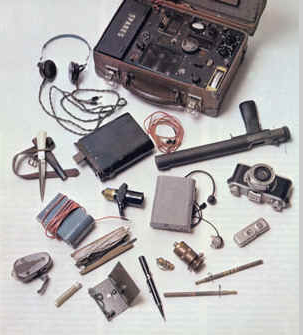 in France, about the threat to Prosper posed by the SOE operative Henri Déricourt, a former pilot in the French Air Force. Buckmaster’s failure to heed this warning resulted in compromising the 67 drops of SOE operatives in France. In consequence, it is impossible to avoid the conclusion that far more than Déricourt, it is Buckmaster himself who bears direct responsibility for the deaths of all the SOE operatives who were subsequently delivered into the hands of the Gestapo, including Jack Agazarian and Noor Inayat Khan. Long after the war, in an interview with the writer Jean Overton Fuller, Déricout claimed that when he had given information to the Gestapo he had been acting on instructions given to him from a ‘higher authourity’ in London. It has been suggested that Déricourt had been inserted in the SOE by MI6, the British Special Intelligence Service, but it seems much more likely that Déricourt might have been acting under the orders of Buckmaster himself.
in France, about the threat to Prosper posed by the SOE operative Henri Déricourt, a former pilot in the French Air Force. Buckmaster’s failure to heed this warning resulted in compromising the 67 drops of SOE operatives in France. In consequence, it is impossible to avoid the conclusion that far more than Déricourt, it is Buckmaster himself who bears direct responsibility for the deaths of all the SOE operatives who were subsequently delivered into the hands of the Gestapo, including Jack Agazarian and Noor Inayat Khan. Long after the war, in an interview with the writer Jean Overton Fuller, Déricout claimed that when he had given information to the Gestapo he had been acting on instructions given to him from a ‘higher authourity’ in London. It has been suggested that Déricourt had been inserted in the SOE by MI6, the British Special Intelligence Service, but it seems much more likely that Déricourt might have been acting under the orders of Buckmaster himself.
When Khan landed in France, the backup Déricourt was responsible for providing did not materialise.The next day, on Thursday June 17th, Khan arrived at the apartment of Emile Henri Garry. Carrying her wireless equipment, she next made her way to Paris on her own. She had remarkable luck: stopped by the Gestapo as she cycled with her radio, she no doubt refused to lie, but somehow allowed them to believe that it was a cine projector. Khan was left alone to transmit information, and she remained on the run until her capture by the Gestapo five months later in November of 1943. During this time she had to carry her wireless equipment, which weighed over 32 lbs., in a suitcase. When she would get ready to transmit she had to set up her transceivers and the over 21 metres of aerial it needed to transmit. It had been estimated that the Germans would be able to detect the source of transmissions within 30 minutes of their being sent. This placed her in extreme danger for the entire duration of her 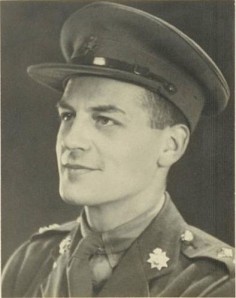 mission. Within one week of landing behind enemy lines, almost all the members of the Prosper Network Khan had been sent to join had been arrested by the Gestapo. The Gestapo had captured seven other S.O.E wireless operators, and now they only had to focus on tracking the last one: Khan. Even so, she managed to elude the Gestapo sweeps for two months. Buckmaster later claimed that he had offered Khan an escape, but, knowing that she was the only operator left and so was of vital importance to the S.O.E, she had refused. Her position was described by the S.O.E as being “the principal and most dangerous post in France.”
mission. Within one week of landing behind enemy lines, almost all the members of the Prosper Network Khan had been sent to join had been arrested by the Gestapo. The Gestapo had captured seven other S.O.E wireless operators, and now they only had to focus on tracking the last one: Khan. Even so, she managed to elude the Gestapo sweeps for two months. Buckmaster later claimed that he had offered Khan an escape, but, knowing that she was the only operator left and so was of vital importance to the S.O.E, she had refused. Her position was described by the S.O.E as being “the principal and most dangerous post in France.”
When Khan was finally captured by paid informants of the Gestapo sometime near the beginning of October 1943, it was not because of any lapse or carelessness on her part, but because she was betrayed. Renée Garry, the sister of that same member of the Resistance (Émile Henri Garry) who had first harbored her, is thought to have been jealous of Khan’s role as an SOE agent. Renée Garry had applied to join the the Prosper Network, but had been refused. She then approached the Gestapo and offered to give Khan up. Renée Garry received 100,000 French Francs (£500) for her vindictive act of treachery in revealing the location of Khan’s wireless equipment to a German agent by the name of Ernst Vogt. Though Khan was caught by surprise when she arrived at the Garry residence a few metres away from the Gestapo Headquarters, she resisted strongly and put up a fierce fight. She was restrained only when Pierre Cartaud, who accompanied Ernst Vogt, threatened to shoot her. Khan was then removed to the Gestapo headquarters on Avenue Foch and held captive on the fifth floor in what before the war used to be the servants’ quarters.
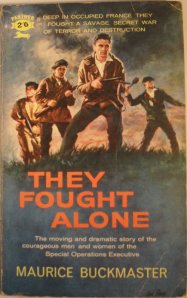 As far as can reliably be ascertained by sifting through various and at times contradictory accounts, Khan was removed from the Gestapo Headquarters at 84 Avenue Foch in Paris and transported by train to the civilian prison in Karlsruhe, Germany. One account has her being transported with four other women to Natzweiler concentration camp and executed there. Initially, after the war, the British put the staff at the Natzweiler concentration camps on trial and charged them with the murders of Khan and four other women agents. Later the court transcript was altered to read Dachau, perhaps because German records indicate that Khan was taken to Pforzheim camp where she was detained for over eleven months, and finally to Dachau, where she was executed. However there are no records in the Dachau prison archives which indicate that Khan was taken to Dachau. Khan is documented in the Pforzheim records under the name of Nora Baker. There, probably due to her repeated efforts to escape from Avenue Foch, she received extraordinarily rough treatment (she was kept in chains in a cell of minute proportions for the entire period of her imprisonment). However, it is unlikely that Khan was tortured in order to extract information – there was no reason to do that because for the ten months since her capture in November of 1943, the Gestapo already had all the records of all wireless communications between Khan and the SOE. The information purported to have been extracted from her in Pforzheim was incorrect. For example, the record states she was born in London, when in fact Khan was born in Moscow. This has led to speculation that the Pforzheim records had been faked by the SOE, but I think it is rather more likely that Khan was continuing to resist by providing false information to the Germans. This latter supposition is consistent with her character as revealed by testimony from the officer who captured Khan and the rest of the operatives in Paris, and who was in charge of interrogations at the Gestapo headquarters in Paris at the time of Khan’s apprehension, Hans Josef Kieffer. After the war when Kieffer was tried for war crimes by the British Military, he testified that he had been able to get nothing from Khan, that she never broke under interrogation, and did not reveal any information pertinent to her mission.
As far as can reliably be ascertained by sifting through various and at times contradictory accounts, Khan was removed from the Gestapo Headquarters at 84 Avenue Foch in Paris and transported by train to the civilian prison in Karlsruhe, Germany. One account has her being transported with four other women to Natzweiler concentration camp and executed there. Initially, after the war, the British put the staff at the Natzweiler concentration camps on trial and charged them with the murders of Khan and four other women agents. Later the court transcript was altered to read Dachau, perhaps because German records indicate that Khan was taken to Pforzheim camp where she was detained for over eleven months, and finally to Dachau, where she was executed. However there are no records in the Dachau prison archives which indicate that Khan was taken to Dachau. Khan is documented in the Pforzheim records under the name of Nora Baker. There, probably due to her repeated efforts to escape from Avenue Foch, she received extraordinarily rough treatment (she was kept in chains in a cell of minute proportions for the entire period of her imprisonment). However, it is unlikely that Khan was tortured in order to extract information – there was no reason to do that because for the ten months since her capture in November of 1943, the Gestapo already had all the records of all wireless communications between Khan and the SOE. The information purported to have been extracted from her in Pforzheim was incorrect. For example, the record states she was born in London, when in fact Khan was born in Moscow. This has led to speculation that the Pforzheim records had been faked by the SOE, but I think it is rather more likely that Khan was continuing to resist by providing false information to the Germans. This latter supposition is consistent with her character as revealed by testimony from the officer who captured Khan and the rest of the operatives in Paris, and who was in charge of interrogations at the Gestapo headquarters in Paris at the time of Khan’s apprehension, Hans Josef Kieffer. After the war when Kieffer was tried for war crimes by the British Military, he testified that he had been able to get nothing from Khan, that she never broke under interrogation, and did not reveal any information pertinent to her mission.
There were two versions of what ultimately befell Khan. The first was that she and three other French agents, Madeleine Damerment, Elaine Plewman and Yolande Beekman,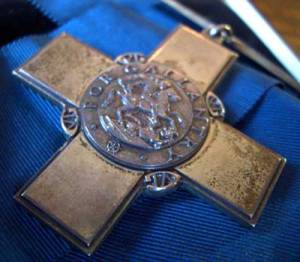 were executed by a gunshot to the back of the head by Friedrich Wilhelm Ruppert in Dachau in September of 1944. This testimony was presented on April 29th 1945 at the American Military Tribunal, by Rudolph Wolf, who was a prisoner in Dachau from September of 1942 until the camp was liberated on April 29th of 1945. Wolf had been paid by the British for his uncorroborated testimony.
were executed by a gunshot to the back of the head by Friedrich Wilhelm Ruppert in Dachau in September of 1944. This testimony was presented on April 29th 1945 at the American Military Tribunal, by Rudolph Wolf, who was a prisoner in Dachau from September of 1942 until the camp was liberated on April 29th of 1945. Wolf had been paid by the British for his uncorroborated testimony.
Another version of events surfaced fourteen years later in 1958, when Jean Overton Fuller, who had published a biography of Khan in 1952, was contacted by a Dutchman with the initials A.F. who told Overton that he had been a prisoner in Dachau and had witnessed Khan’s execution. He stated that the English prisoner, undoubtedly Khan, had been picked out from the other prisoners and stripped and beaten until she was a bloody mess, and then shot.
The dates of the execution have been variously given as September 11th, September 12th, September 13th and September 15th of 1944. It seems most likely that the four prisoners were brought to Dachau on the morning of September 11th and executed a day or two later. Although the uncorroborated eyewitness testimony of Rudolph Wolf places the execution on the morning of September 13th, the plaque in the Dachau crematorium gives the date of the execution of the four women as September 12th.
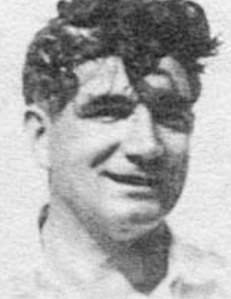 To learn the truth of all this, it would surely be useful and informative to examine the H.S.9 reports (personnel files) in the British National Archives The BNA states: This series contains personnel files of SOE agents and staff. The files may contain papers dealing with the service records of individuals, including medical reports, appraisals of performance and suitability for particular roles, as well as passport-style photographs of the subject and reports of their activities. The contents in any individual’s file can vary considerably however, and some files only contain a very brief note indicating that an individual was considered for service in SOE, but rejected. Some papers in many of the files are damaged or mutilated to some extent: many have been partly burnt; some names have been removed by being cut out from papers at some time in the past. The files also include papers in many different languages, according to the work performed by the individual concerned. Some extracts continue to be retained by the Department under section 3(4) of the Public Records Act and there are dummy sheets in place to indicate where this has happened. Many files contain passport-style photographs of the agents.
To learn the truth of all this, it would surely be useful and informative to examine the H.S.9 reports (personnel files) in the British National Archives The BNA states: This series contains personnel files of SOE agents and staff. The files may contain papers dealing with the service records of individuals, including medical reports, appraisals of performance and suitability for particular roles, as well as passport-style photographs of the subject and reports of their activities. The contents in any individual’s file can vary considerably however, and some files only contain a very brief note indicating that an individual was considered for service in SOE, but rejected. Some papers in many of the files are damaged or mutilated to some extent: many have been partly burnt; some names have been removed by being cut out from papers at some time in the past. The files also include papers in many different languages, according to the work performed by the individual concerned. Some extracts continue to be retained by the Department under section 3(4) of the Public Records Act and there are dummy sheets in place to indicate where this has happened. Many files contain passport-style photographs of the agents.
I came across various claims stating that Khan’s file is reported to have been declassified, but when I searched for her H.S 9 report I found that the access conditions were described as “subject to closure for periods of up to 85 years”, and an opening date of January 2025 had been appended. The H.S 9/836 file was designated as a “closed or retained document,” and it was additionally stated that “This document is closed and cannot be viewed or re-opened as a digital or printed copy.” It would have been possible for me to submit a paid request for information contained in Khan’s SOE files, which would then have been subjected to a review by the appropriate government agencies, but given all these already admitted restrictions there was little to suggest either that the decision would fall in my favor or that, should permission be granted, there would be anything of substantial interest and value revealed. Under such uncertainty it seemed to me pointless to submit a request – particularly since it now seemed, at least to me, reasonable to assume that the SOE had something to hide.
One scenario this otherwise hard to understand secrecy suggests is that the SOE was completely incompetent. But there is a more sinister possibility: that the sacrifice of Khan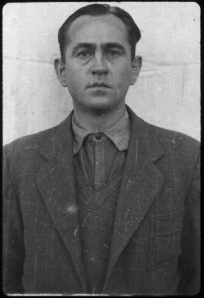 was in full accord with intentions of the SOE.
was in full accord with intentions of the SOE.
Khan’s story has to be examined in the light of the plans the Allies, and more particularly the British, were making for the future D-Day invasion of France. For obvious reasons these plans had to be kept unassailably secret, and the location of the planned invasion had to be carefully guarded if the allied assault was not to be met with stiff German resistance. Great pains were taken to throw Hitler off the scent, and induce him to deploy his heavily armoured panzer divisions on the Seine to the North-East of Pas-de-Calais where they would be the least helpful to him and where they would be least capable of inflicting damage on the allies.
One of the most reliable ways for the Allies to assure that the Germans were confused and misled would have been through disinformation. With telephone lines being cut in advance of the D-Day plans, one of the only reliable means left for achieving this disinformation would have been to have available someone such as Khan–someone inept and expendable who, when she was inevitably captured, would have naturally left the Germans assuming that they were the beneficiaries of a stroke of good luck in being able to eavesdrop on the communications between the British and their covert agents in France. This would have taken long range planning – this fortuitous placement of someone who would seem (to the Germans) to compromise the lines of communication of the SOE.
There are many seemingly unrelated facts about Khan’s mission which do not lead to any clear conclusion by themselves, but which taken together point in the direction of a cynical – if not sinister – plan–a plan on the part of the very organization she risked (and lost) her life to serve: the SOE. Here are some of those provocative facts:
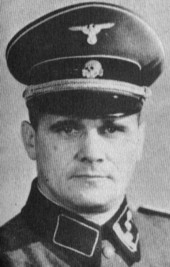 1.That Khan was selected for her mission is surprising, given the SOE’s extremely derogatory views about her temperament and her unsuitability for the task to which she was being assigned. One evaluation of Khan said she was“Not over-burdened with brains, but has worked hard and shown keenness apart from the security part of the course. She has an unstable and temperamental personality, and it is very doubtful whether she is really suited to work in the field.
1.That Khan was selected for her mission is surprising, given the SOE’s extremely derogatory views about her temperament and her unsuitability for the task to which she was being assigned. One evaluation of Khan said she was“Not over-burdened with brains, but has worked hard and shown keenness apart from the security part of the course. She has an unstable and temperamental personality, and it is very doubtful whether she is really suited to work in the field.
2.That she was given instructions to carefully keep with her all her communications was another glaring inconsistency. No self-respecting spy agency on earth would require an agent to retain copies of highly incriminating documents, particularly if the possession of such documents not only would make the spy agency transparent and vulnerable to the enemy, but also would place the spy at risk of torture and execution.
3.The SOE ignored the warnings of one of its own agents in France, Jack Agazarian, regarding suspicions about Henri Déricourt
4.The chief of the SOE, Maurice Buckmaster, repeatedly ignored the the vital fact that the communications received from France and thought to be Khan’s did not contain the bluff security codes which would have proved that they were sent by an SOE agent and not someone outside the agency . The absence of bluff codes was a clear and unequivocal indication that the wireless transmissions the SOE were receiving did not come from Khan.
5. On October 2nd 1943, French Resistance agent Sonia Olschanesky cabled the SOE: “Madeleine had serious accident and in hospital need to confirm on contact if genuine or Gestapo will try to find more information.” Buckmaster chose to ignore this message.
6. Neither the nature nor the specific information – or disinformation – sent back to France, ostensibly to the SOE agents but in reality to the Gestapo, has ever been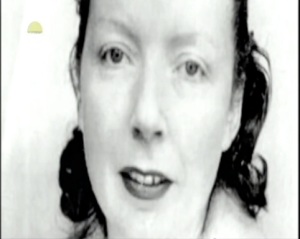 disclosed.
disclosed.
7. The eyewitness accounts of Khan’s ultimate fate were never corroborated, and such hearsay accounts as we have contradict each other in material detail.
8. The SOE files on Khan have never been completely declassified, and I suspect they never will be, because the information they contain will doubtless completely undermine the confidence of future agents regarding the trustworthiness of their commanding officers and the commitment of those officers to safeguarding the lives of non-uniformed agents in the field.
The facts suggest that the SOE had a reason for wanting Khan to remain in German hands. Could it be that the SOE intended that with Khan, her code books, her wireless equipment and records of all prior clandestine communications in the hands of the Gestapo, they (the SOE) would be perfectly situated to feed disinformation to the Germans? Churchill had begun planning for the allied invasion of France as early as May of 1942. The invasion took place in June of 1944, and between the time of inserting these agents, and the time of the invasion, the SOE could have hoped to have passed an enormous amount of disinformation on to the Germans. This expedient would have proved extremely helpful to the allies. It would also have served as cover for the planned invasion. If indeed it was employed, this strategy was, as 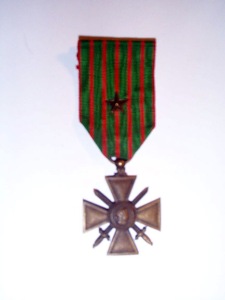 the Allied victory attests, successful. But one wonders at the extent to which the SOE was capable of making decisions dependent on a cynical and reprehensible willingness to deceive and sacrifice their own agents.
the Allied victory attests, successful. But one wonders at the extent to which the SOE was capable of making decisions dependent on a cynical and reprehensible willingness to deceive and sacrifice their own agents.
While these may seem to be merely my own speculations, they are supported in part by the failure of the British Government to declassify Khan’s files. The only information that has trickled out piecemeal and that has been put forward by former agents, supports the SOE version of the Khan mission, a version which seems to be cunningly contrived to serve as a cover for either one of the most spectacular failures in the history of spying, or else a cynical attempt to disguise the fact that the SOE sent its most vulnerable recruits as expendable bait in order to trap the Nazis into committing the kinds of intelligence errors that would lead to them lose the war. That the officers in charge were never reprimanded or disciplined, let alone tried for their gross negligence and incompetence, and that this was permitted to continue unchecked is one of the unexplained mysteries of WWII, unless this was not a case of incompetence, but rather of design. If so, in this, it must be admitted, the British effort was a marked success. But the price paid for that success remains at best questionable, and at worst unforgivable. For there is a vast difference between making the choice to sacrifice oneself for one’s country, and being sacrificed by one’s superiours. The former we may laud; the latter we must, as honourable and ethical beings, condemn.
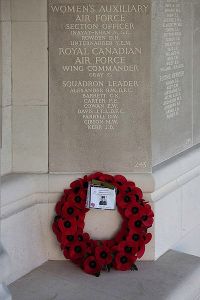
Postscript
Renée Garry, who betrayed Noor Inayat Khan to the Gestapo for the sum of £500 and led them directly to her, was acquitted for ‘lack of evidence’. She defended herself on the grounds that the British authorities had awarded her a testimonial. She was also acquitted of the crime of betraying her brother (who was executed by the Germans in Buchenwald in 1944), on grounds of insufficient evidence.
Hans Josef Kieffer, SS Oberbersturmbanführer, was tried and found guilty of war crimes in the British Military Court in Wuppertal. He was interrogated by Vera Atkins. He was executed in Hameln prison on June 26th 1947.
Friedrich Wilhelm Ruppert, the sadistic officer in charge of executing condemned prisoners in Dachau, was tried by the American Occupying forces and executed on May 29th 1946.
Henri Déricourt of the French Resistance was arrested by the French Authourities. Despite evidence provided by the Abwehr and the Gestapo during his trial that he had betrayed his SOE colleagues in the Prosper and other networks and provided information which had led to their arrests and subsequent executions, he was acquitted.